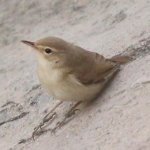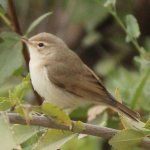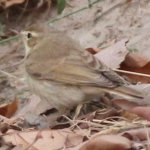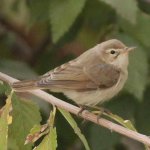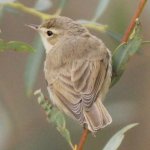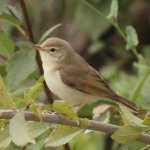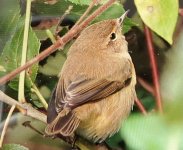PhilSteiner
Well-known member

A friend photographed this bird on Sunday and left it at Iduna/Hippolais/Acrocephalus sp. but would like to get it IDed to species if possible. He wrote:
"Would appreciate input on this one. Foraging on wall and in bushes and small trees, did not observe any particular motion of wings or tail but I was not looking for those things. Pale warbler with grayish upperparts, white underparts, pale supercilium that extended beyond eye, dark legs, square-tipped tail, and entirely pale lower mandible. Square-tipped tail seems to eliminate Blyth’s Reed Warbler; Entirely pale lower mandible and fairly long supercilium seems to rule out Syke’s and Booted Warblers; and Eastern Olivaceous Warbler seems unlikely due to different ground color and lack of a pale wing panel."
Any ideas? I ran it through Merlin for fun and it was all over the place, returning Sykes', Blyth's, and Chiffchaff on different photos.
"Would appreciate input on this one. Foraging on wall and in bushes and small trees, did not observe any particular motion of wings or tail but I was not looking for those things. Pale warbler with grayish upperparts, white underparts, pale supercilium that extended beyond eye, dark legs, square-tipped tail, and entirely pale lower mandible. Square-tipped tail seems to eliminate Blyth’s Reed Warbler; Entirely pale lower mandible and fairly long supercilium seems to rule out Syke’s and Booted Warblers; and Eastern Olivaceous Warbler seems unlikely due to different ground color and lack of a pale wing panel."
Any ideas? I ran it through Merlin for fun and it was all over the place, returning Sykes', Blyth's, and Chiffchaff on different photos.




